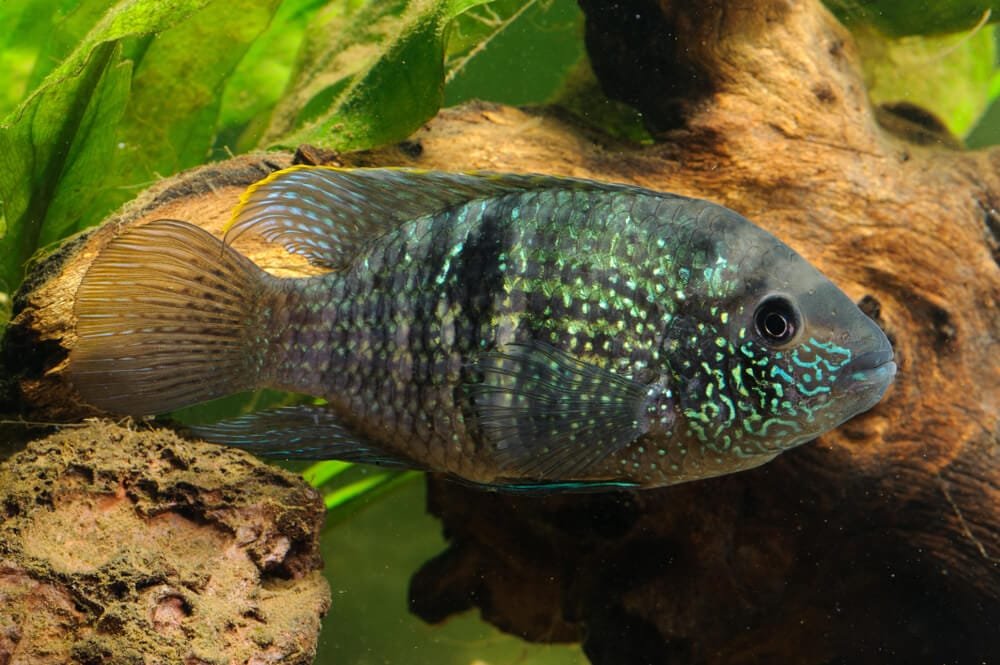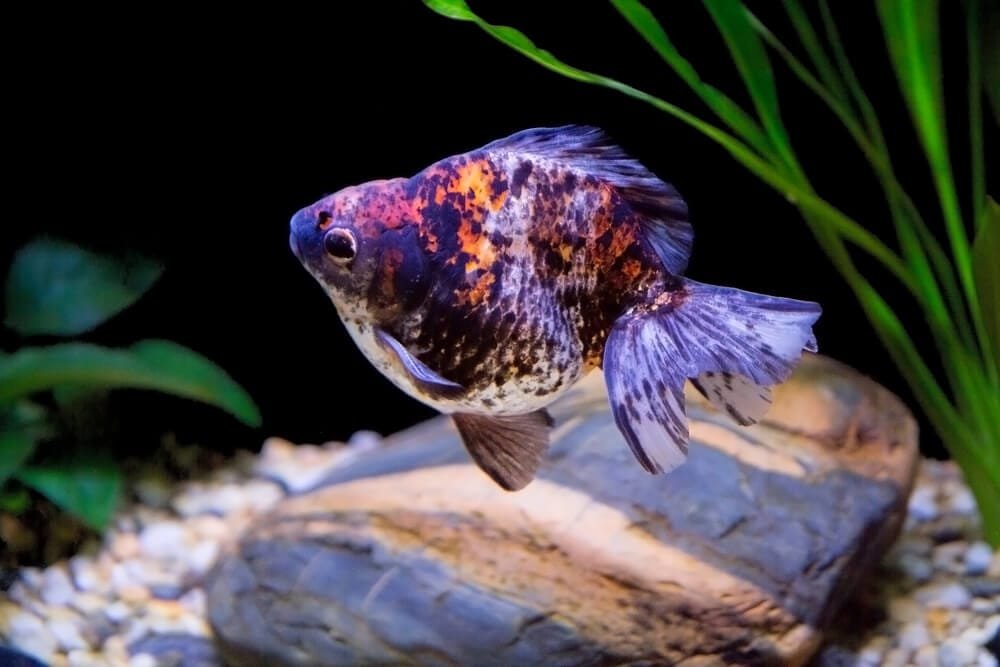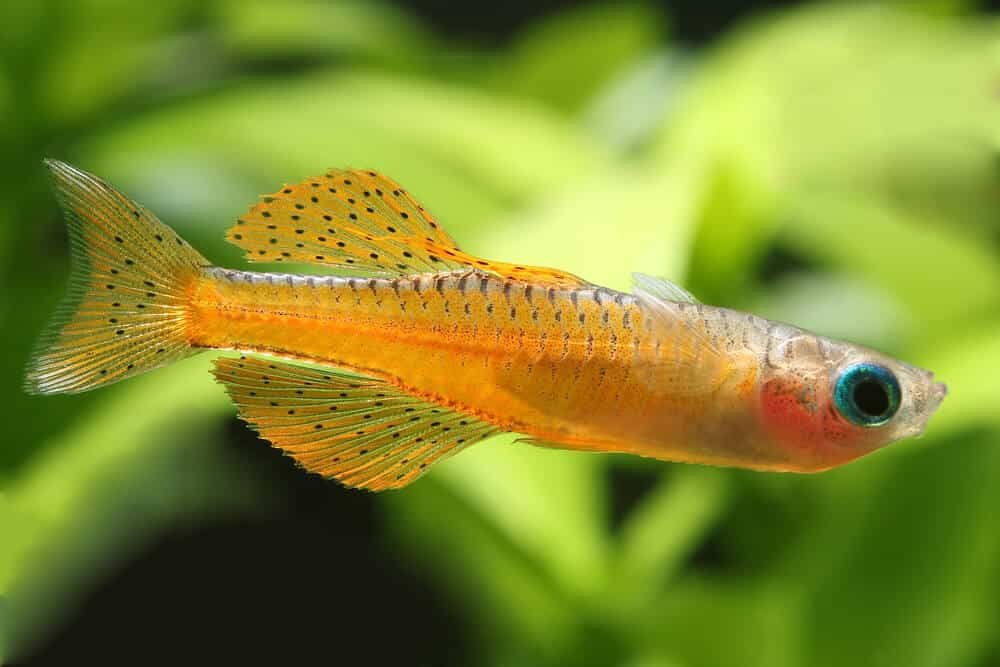You are about to embark on a journey deep into the vibrant world of the “Blue Acara”. This fascinating creature, known for its stunning blue scales and unique characteristics, has captured the attention of aquarists around the globe. As you delve into the intricacies of its appearance, behavior, and habitat, you will discover why the Blue Acara stands out among its aquatic counterparts. Prepare to be enchanted by the beauty and allure of this remarkable fish as we uncover the secrets behind the Blue Acara’s captivating presence.
Physical Characteristics
Coloration
The Blue Acara, also known by its scientific name Andinoacara pulcher, gets its name from its stunning blue coloration, which is the most prominent feature of its physical appearance. The base color of the Blue Acara is a rich blue, ranging from light to dark shades, with a vibrant metallic sheen that adds to its beauty. The scales of this fish also exhibit a shimmering effect, further enhancing its overall appearance. In addition to their vibrant blue color, adult male Blue Acaras often develop a yellow or gold color on their dorsal fin and upper body, which contrasts beautifully with their blue hue. Females, on the other hand, tend to display less intense coloration, with a milder blue and less development of the yellow or gold accents.
Size
Blue Acaras are a relatively medium-sized cichlid species. When fully grown, they can reach a size of about 6 to 7 inches (15 to 18 centimeters). The size difference between males and females is not significant, with males being slightly larger overall. However, it is important to note that the growth rate and final size of Blue Acaras can be influenced by factors such as diet, genetics, and tank conditions.
Shape
The Blue Acara has an oval-shaped body, typical of many cichlid species. Their bodies are laterally compressed, meaning they are flattened from side to side. This body shape allows them to navigate and maneuver easily through their aquatic environment. The Blue Acara also has a relatively deep body compared to some other cichlids. Their dorsal and anal fins are elongated, adding to their overall graceful appearance.
Markings
In addition to their stunning blue coloration, Blue Acaras showcase unique markings that further enhance their visual appeal. One distinguishing feature is the presence of dark vertical bars on their bodies. These bars tend to be more pronounced in juveniles and can fade or become less visible as the Blue Acara matures. Another notable marking is a black spot situated towards the posterior part of the fish, just below the lateral line. This spot is commonly referred to as an eyespot or ocellus. It serves as a form of camouflage and defense mechanism.
Habitat
Native Range
The Blue Acara is native to the freshwaters of Central and South America. It is commonly found in countries such as Guatemala, Honduras, Nicaragua, and Costa Rica. These regions are characterized by tropical climates and abundant water bodies, including rivers, streams, and lakes. In the wild, Blue Acaras inhabit various habitats, including slow-moving rivers, flooded forests, and areas with dense aquatic vegetation.
Preferred Environment
In order to thrive, Blue Acaras require an aquarium setup that mimics their natural environment as closely as possible. They prefer warm water temperatures ranging between 75 to 80°F (24 to 27°C). The pH level should ideally be maintained between 6.5 to 7.5, with a slightly acidic to neutral water condition. The water hardness should be moderate, around 8 to 15 dGH. It is important to note that these are general guidelines. Specific water parameters may vary depending on the individual preferences and needs of the fish.
Aquarium Setup
To create an ideal habitat for Blue Acaras, it is recommended to provide them with an aquarium that has a minimum capacity of 30 gallons (114 liters) for a pair or small group. The tank should be equipped with an efficient filtration system to maintain water quality, as well as a heater to regulate the temperature. Blue Acaras appreciate the presence of caves, rocks, and driftwood in their environment. This can serve as hiding spots and territorial boundaries. Dense planting with hardy aquatic plants, such as Java Fern or Amazon Swords, is beneficial for providing cover and creating a naturalistic setting. Adequate lighting should also be provided to simulate their natural day-night cycle.
Behavior
Social Structure
Blue Acaras are generally peaceful and can be kept in a community tank with other peaceful fish species. However, they do display some territorial behavior, especially during breeding and spawning periods. It is therefore advisable to provide plenty of hiding spots and separate territories when housing multiple Blue Acaras. Keeping a pair or a small group of Blue Acaras in a spacious tank with plenty of visual barriers can help prevent aggression and minimize stress.
Feeding Habits
Blue Acaras are omnivorous and have a versatile diet in the wild. They primarily feed on small invertebrates, such as insects, crustaceans, and worms, as well as plant matter. In the aquarium setting, they readily accept a variety of foods. Their diet should consist of a mixture of high-quality pellets or flakes supplemented with frozen or live foods like bloodworms, brine shrimp, and small crustaceans. Offering a varied diet helps ensure they receive a balanced nutritional intake and promotes optimal health and coloration.
Breeding Behavior
During the breeding season, Blue Acaras exhibit fascinating courtship rituals. The male becomes more vibrant in color, particularly on the dorsal fin and upper body, while the female displays a darker blue coloration. The courtship often involves the male displaying to the female by flaring his fins and intensifying his colors. Once a pair has formed, they will choose a site to deposit and guard their eggs. Both parents actively participate in tending to and protecting the eggs. Blue Acaras are known to be attentive parents, guarding their fry fiercely and ensuring their survival.
Aggression
While Blue Acaras are generally peaceful, aggression may occur during breeding or when territorial disputes arise. It is important to monitor the behavior of your Blue Acaras and provide adequate hiding spots and visual barriers to minimize any potential aggression. If aggression persists or escalates, it may be necessary to separate individuals to prevent harm to other tankmates.
Diet
Natural Diet
In their natural habitat, Blue Acaras have a varied diet consisting of small invertebrates like insects, worms, and crustaceans. They also consume plant matter, such as algae and submerged vegetation. This diverse diet allows them to obtain the necessary nutrients for their growth and overall health.
Feeding in Captivity
In captivity, Blue Acaras readily accept a variety of commercially available foods. A high-quality pellet or flake food formulated for cichlids can serve as the staple diet. However, it is important to supplement their diet with additional protein-rich foods to ensure a well-rounded nutritional intake. Offering frozen or live foods like bloodworms, brine shrimp, and daphnia will mimic their natural diet and help maintain their health and vibrancy.
Food Preferences
Blue Acaras, like many cichlids, can be opportunistic feeders and take advantage of various food sources. They appreciate a mix of protein-rich foods and plant matter. It is beneficial to offer a variety of food types, including pellets, flakes, frozen foods, and live foods. This diversity not only keeps them physically satisfied but also provides mental stimulation, as they engage in foraging behavior similar to their natural feeding habits.
Tankmates
Compatible Fish Species
Blue Acaras are generally peaceful and can be kept with a variety of community fish species, provided they are not overly aggressive or prone to fin nipping. Good tankmates for Blue Acaras include peaceful community fish like tetras, livebearers, corydoras catfish, and other non-aggressive cichlid species. It is important to avoid housing them with overly aggressive or territorial fish, as this can lead to stress and potential conflicts.
Incompatible Fish Species
While Blue Acaras can coexist peacefully with many fish species, there are some species best avoided as tankmates. Aggressive fish, such as most cichlids from the same region, should not be housed together with Blue Acaras to prevent territorial disputes. Additionally, fin-nipping fish like tiger barbs or certain species of bettas would not be suitable tankmates since they may damage the flowing fins of Blue Acaras.
Aquarium Care
Water Conditions
Maintaining suitable water conditions is crucial for the health and well-being of Blue Acaras. The water temperature should be kept between 75 to 80°F (24 to 27°C). The pH level should ideally be maintained between 6.5 to 7.5, with a slightly acidic to neutral water condition. The water hardness should be moderate, around 8 to 15 dGH. Regular monitoring of water parameters and water changes can help ensure a stable and optimal environment for your Blue Acaras.
Filtration
A robust filtration system is essential in maintaining good water quality in the aquarium. Blue Acaras are sensitive to poor water conditions and can be negatively impacted by high levels of ammonia, nitrite, or nitrate. A combination of mechanical, biological, and chemical filtration methods can be used to remove debris and toxins from the water, providing a healthy and clean environment for your Blue Acaras.
Regular Maintenance
Regular maintenance is a vital part of caring for Blue Acaras. Taking care of your aquarium involves tasks such as monitoring water parameters, performing regular water changes, and cleaning the tank and filtration system. Water changes should be done on a weekly basis, replacing approximately 20% of the water volume. Additionally, thorough cleaning of the tank, including removal of uneaten foods and debris, should be done periodically to prevent the buildup of harmful substances.
Health Issues
Common Diseases
Like any fish species, Blue Acaras are susceptible to certain health issues. Some common diseases that can affect them include bacterial or fungal infections, parasitic infestations, and swim bladder disorders. Stress, poor water conditions, or inadequate nutrition can weaken their immune system and make them more prone to diseases. Observing any changes in behavior, appetite, or physical appearance can help identify potential health issues early on.
Preventive Measures
Prevention is key when it comes to managing the health of Blue Acaras. Providing a suitable environment with proper water conditions, a balanced diet, and regular maintenance can help prevent many common health issues. Quarantining new fish before introducing them to an established tank can also help prevent the introduction of diseases. It is also advisable to avoid overstocking the tank and to monitor the behavior and overall well-being of your Blue Acaras closely.
Treatment
If you notice any signs of disease or illness in your Blue Acara, it is important to address the issue promptly. Consulting with an experienced aquatic veterinarian or knowledgeable fishkeeper can help determine the appropriate course of treatment. Treatment methods may involve the use of medication, water parameter adjustments, or quarantine procedures to safeguard the health of your Blue Acara and the other inhabitants of the aquarium.
Breeding
Breeding Process
Blue Acaras breeding in captivity can be a rewarding experience for fishkeepers. To initiate the breeding process, it is best to provide the fish with suitable conditions, including proper water parameters, ample hiding spots, and a nutritious diet. The male will begin courtship rituals, displaying vibrant colors and engaging in fin-flaring behaviors to attract a female. Once a pair has formed, they will select a suitable site to lay their eggs. The female will deposit the eggs, and the male will fertilize them immediately. Both parents will actively guard and fan the eggs, ensuring proper oxygenation and preventing fungus or bacteria growth. After a few days, the eggs will hatch, and the fry will be released.
Care for Fry
Blue Acaras are attentive parents and actively care for their fry. The parents will guide the young fry to suitable areas within the tank, protecting them from potential threats and providing them with food. Initially, the parents may lead the fry to feed on the slime coat produced by their bodies. As the fry grow, they will begin to accept finely crushed flakes or pellets, alongside their parent’s regurgitated food. Separate rearing tanks or the presence of suitable hiding spots within the main tank can help protect fry from being consumed by adult fish or other tankmates.
Sexual Dimorphism
Sexual dimorphism in Blue Acaras is relatively subtle. As previously mentioned, males tend to display more vibrant colors, particularly on the dorsal fin and upper body, compared to females. Additionally, mature males may develop a more pronounced nuchal hump, a fleshy growth on the forehead, while females have a more rounded head shape. These subtle physical differences can assist in identifying the sex of adult Blue Acaras.
Popular Variants
Electric Blue Acara
The Electric Blue Acara is a beautiful variant of the Blue Acara with enhanced blue coloration. This variant exhibits an intense shade of blue throughout its body, often resembling the bright hue of an electric blue. The striking coloration of the Electric Blue Acara makes it a highly sought-after fish for aquarists looking to add a vibrant centerpiece to their tanks. The care and breeding requirements for the Electric Blue Acara are similar to those of the standard Blue Acara.
Gold Acara
The Gold Acara is another popular variant derived from the Blue Acara. As the name suggests, this variant showcases a stunning golden coloration instead of the typical blue. The bright gold hue adds a lively and eye-catching element to any aquarium. Gold Acaras share similar characteristics with their Blue Acara counterparts in terms of behavior, care, and breeding.
Other Color Varieties
In addition to the Electric Blue and Gold variants, there are various other color varieties of the Blue Acara available in the aquarium trade. These color variations can range from lighter shades of blue to darker or more iridescent hues. These variants offer aquarists the opportunity to select a Blue Acara that best suits their aesthetic preferences, allowing them to create a unique and visually striking aquarium display.
Availability and Price
Pet Stores
Blue Acaras are commonly available in many pet stores specializing in fish and aquarium supplies. Local pet stores often stock them due to their popularity and appeal among cichlid enthusiasts. Visiting reputable pet stores in your area can provide an opportunity to observe and select healthy Blue Acaras. It is important to inquire about the fish’s origin, ask about any specific care requirements, and ensure the fish appears vibrant and active before making a purchase.
Online Sources
Online retailers and specialized fish breeders are another convenient source for acquiring Blue Acaras. Many reputable online sources offer a wide selection of healthy and well-cared-for Blue Acaras, allowing fishkeepers to choose from different color variations and age groups. When purchasing online, it is vital to research the reputation of the seller, read customer reviews, and ensure appropriate shipping and handling procedures are in place to minimize stress and ensure the fish’s safe arrival.
Pricing Factors
The price of Blue Acaras can vary depending on factors such as their size, color variation, and the source from which they are obtained. Generally, younger specimens are less expensive compared to adult or highly sought-after variants. Additionally, rarer color variations or specific genetic lines may command a higher price due to their desirability. Price ranges can vary from around $10 for a young Blue Acara to over $50 for a larger or more unique variant. It is important to consider the overall health and quality of the fish rather than solely focusing on the price when making a purchase decision.
Summary
The Blue Acara is a captivating and attractive fish species that can be a delightful addition to a community aquarium. Its stunning blue coloration, medium size, and peaceful nature make it a popular choice among fishkeepers. By providing them with an appropriate environment, a well-balanced diet, and proper care, you can enjoy the beauty and fascinating behavior of Blue Acaras in your own home aquarium.






